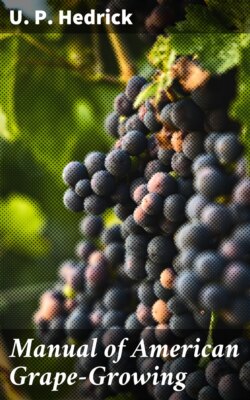Читать книгу Manual of American Grape-Growing - U. P. Hedrick - Страница 99
На сайте Литреса книга снята с продажи.
The first year.
ОглавлениеThe vines having been pruned and staked at planting, these operations need no attention in the first summer. Many varieties send up several shoots as growth starts, and, except in the case of grafted plants and in the event of the suckers coming from the stock, these should be left to feed the vine and help to establish a good root system. Vines making a strong growth should be tied to the stake, at least the strongest shoot, to keep the wind from whipping it about and to keep the plants out of the way of the cultivator. The only knack in tying is to keep the vine on the windward side of the stake, thus saving the breaking of tying material.
The first year's pruning, though severe, is easily done. All but the strongest cane are cut out and this is pruned back to two buds, nearly to the ground, so that the vines are much as when set in the vineyard. This pruning, and that of the next two years, has as the object the establishment of a good root system and the production of a sturdy trunk at the height at which the vine is to be headed. It is important that the cane from which the trunk is to come be healthy and the wood well ripened. Pruning may be done at any time after the leaves fall, though most growers give preference to late winter. In cold climates it is a good practice to plow up to the young vines for winter protection, in which case the pruning should be done before plowing.
Every detail of vineyard management should be performed with care and at the accepted time in this critical first year. Cultivation must be intensive, insects and fungi must be warded off, mechanical injuries avoided, vines that have refused to grow must be marked for discard, and the vineyard be put down to a cover-crop in early August if it was not earlier planted to some hoed catch-crop.
